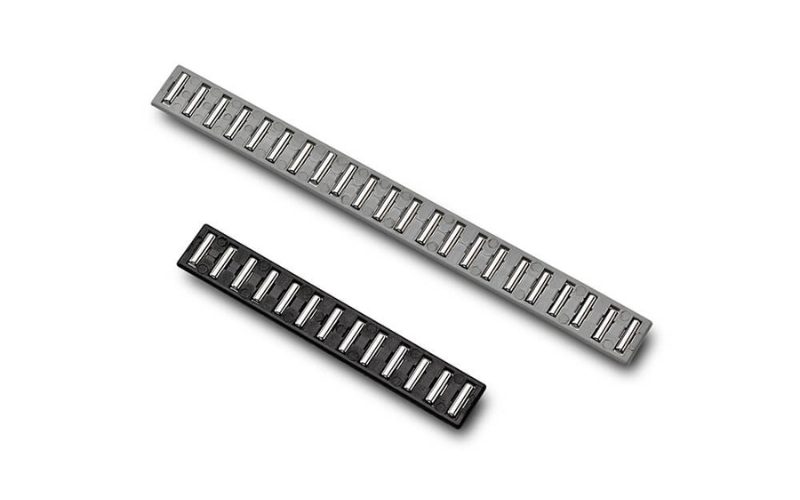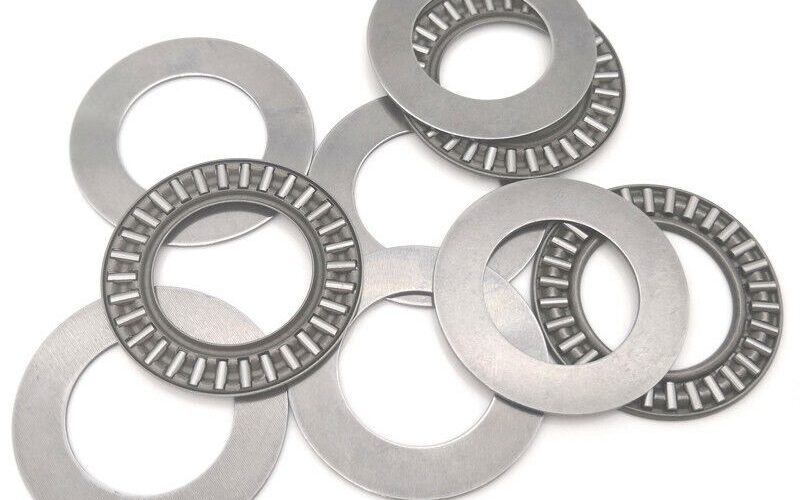Table of Contents
Categories
-
Adapter Sleeves (9)
-
Ball Bearings (11)
-
Ball Screw Bearings (2)
-
Ceramic Bearings (27)
-
Pillow Block Bearings (4)
-
Plain Bearings (32)
-
Roller Bearings (12)
-
Slewing Bearings (43)
-
Sliding Block (3)
-
Stainless Steel Bearings (27)
-
Super Precision Bearings (6)
-
Thin Section Bearings (9)
-
Track Rollers (4)
-
Universal Joints (1)
Mastering Flat Bearings: Essential Tips
Introduction
Flat bearings are a common mechanical component that plays a key role in various industries. Simply put, flat bearings are devices used to support and reduce friction, usually consisting of one sliding or rolling surface in contact with another surface. Whether it is automobiles, aviation, industrial manufacturing, or household appliances, almost all mechanical equipment requires flat bearings to ensure its normal operation.
The importance of flat bearings lies in their ability to reduce friction between mechanical components and carry the load, ensuring smooth operation of the equipment. Once flat bearings have problems or fail, it will lead to a decrease in mechanical performance.
What Are Flat Bearings?
Flat bearings are a common form of plain bearings, and their structure is usually two planar surfaces that move relative to each other. More specifically, flat bearings consist of a fixed bearing seat and a rotatable bearing body. The bearing seat is usually a body component with a flat hole, and the bearing body is a cylindrical or flat rotating piece that matches the bearing seat hole.
When working, the bearing body will rotate in the hole of the bearing seat, and a fluid lubricating film will be formed between the two with the help of liquid or solid lubricant, making the rotation relatively smooth and unimpeded. Flat bearings are mainly used to bear radial loads, and can also bear part of the axial load by processing inclined surfaces.
Flat bearings have a simple structure and are easy to manufacture, so they are widely used.
Function Of Flat Bearings
Flat bearings play an important role in various mechanical transmission systems, and their main functions can be summarized as follows:
Carrying radial loads
- The main design purpose of flat bearings is to provide a smooth relative motion interface to carry the radial load between the rotating shaft or journal and the bearing seat.
Implement positioning and guidance
- In addition to their load-bearing function, flat bearings can also constrain and guide the movement direction of the rotating axis to keep it on a predetermined movement trajectory. This positioning and guiding role is critical to ensuring the precise operation of mechanical systems.
Reduce movement resistance and wear
- By forming a hydrodynamic lubricating film between the bearing body and the bearing seat, flat bearings can effectively reduce the motion resistance during rotation and the wear between the relative motion pairs, thereby extending the service life of the entire system.
Adjust movement accuracy
- By controlling the assembly clearance, surface roughness, and other parameters of flat bearings, its motion characteristics can be optimized to meet the motion accuracy requirements of different applications.
- In some applications, flat bearings can also provide sealing and isolation for the system to prevent contaminants and other media from entering critical parts.
Dissipate heat
- Bearings will generate a certain amount of heat when rotating at high speed. Excellent flat bearings design can effectively dissipate heat and prevent excessive temperature from affecting system performance.
Types Of Flat Bearings
According to different structural forms, flat bearings can be divided into the following main types, each type has its own characteristics:
- Flat bearing plate: This is the most basic and simplest form of flat bearing. Both the bearing body and the bearing seat have a single flat surface and are suitable for carrying moderate radial loads.
- Shallow groove flat bearings: A number of annular shallow grooves are processed on the surface of the bearing body or bearing seat, which can improve the distribution and retention of lubricating oil.
- Step type/trapezoid flat bearings: Designing a step or trapezoid structure at the oil inlet end of the bearing body or bearing seat helps to form a sufficiently thick hydrodynamic lubricating film. Suitable for heavy machinery that needs to bear larger loads.
- Pillow-type flat bearings: This type has additional support surfaces at both ends of the bearing body to bear part of the axial load. Often found in bearing systems of pumps, compressors and other equipment.
- The movable body pivots flat bearings: The bearing seat is a fixed annular structure, and the bearing body can swing slightly and adjust itself with the help of the pivot. Therefore, the initial deviation of the axis can be automatically corrected, and it is often used in situations where high precision is required.
- Sliding Plate Flat Bearing: It is composed of multiple split plane small slide blocks. Each slide block can slide freely in the installation groove and carry radial force. Mainly used for large heavy-duty rotating equipment such as water motors, etc.
- Polymer self-lubricating flat bearings: Made of polymer materials such as polytetrafluoroethylene, they can achieve wear-free operation under smaller loads without external lubrication. Widely used in household appliances and general machinery.

Common Applications Of Flat Bearings
Flat bearings, also known as plain bearings, find wide applications across various industries due to their versatility and effectiveness in reducing friction and supporting loads. Some common applications include:
- Automotive Industry——Flat bearings are used in engines, transmissions, suspension systems, and steering mechanisms of vehicles.
They facilitate the smooth movement of components such as crankshafts, camshafts, and axles, ensuring optimal performance and durability.
- Industrial Machinery——In industrial manufacturing equipment, flat bearings are utilized in conveyor systems, machine tools, pumps, and compressors.
They support rotating or sliding shafts, providing stability and reducing friction to enhance operational efficiency.
- Aerospace Sector——Flat bearings play a vital role in aircraft engines, landing gear systems, and flight control mechanisms.
Their ability to withstand high loads and operate under extreme conditions makes them essential components in aerospace applications.
- Household Appliances——Various household appliances, including washing machines, refrigerators, and air conditioners, incorporate flat bearings in their moving parts.
These bearings contribute to the smooth and reliable operation of the appliances, improving user experience.
- Power Generation——In power generation facilities such as turbines, generators, and wind turbines, flat bearings are used to support rotating shafts and ensure efficient energy production.
They help minimize friction losses and maintain the stable operation of the equipment.
- Marine Applications——Flat bearings are employed in marine propulsion systems, steering gears, and winches on ships and boats.
They withstand harsh marine environments and provide reliable performance for maritime operations.
What Are The Advantages Of Flat Bearings
As a simple and classic bearing form, flat bearings have the following main advantages:
1. Simple Structure and Low Cost
2. High-Temperature Tolerance 、High Load Capacity and Good Adaptability
3. Low Friction and Wear
4. Shock Absorption and Quiet Operation
5. Wide Range of Materials and Easy Maintenance
6. Self-Lubricating Options
Master The Key Tips Of Flat Bearings
Correct Selection:
- Load Capacity: Select a bearing that can withstand the expected load. The load rating of the bearing should be greater than the maximum load in the application.
- Speed: Consider the maximum allowable speed of the bearing. High-speed applications require specially designed bearings.
- Operating Conditions: Consider the temperature, humidity, and corrosiveness of the operating environment. Select the appropriate material and lubricant to suit these conditions.
- Bearing type and material: Different bearing types and materials have different characteristics. Commonly used materials include: copper alloys, aluminum alloys, polytetrafluoroethylene (PTFE), polyimide (PI), babbitt, etc., and different materials have different properties.
Proper Mounting Techniques:
- Cleaning: Before mounting, make sure the bearing and housing are clean and free of contamination.
- Handling: Handle the bearing carefully to avoid damage to the surface or balls.
- Alignment: Ensure proper alignment of the bearing and shaft to avoid eccentricity and tilting.
- Mounting Procedure: Follow the manufacturer’s instructions to avoid over-tightening or over-loosening.
Lubrication and Maintenance:
Importance of lubrication: lubricant can form a film that separates the bearing surface, thus reducing friction and wear; at the same time, the lubricant can also absorb the heat generated by friction and reduce the operating temperature of the bearing.
Selection of lubricant: Commonly used lubricants for flat bearings include oil, grease, and solid lubricants. The bearing must bear the load size, bearing speed, working conditions maintenance requirements, and other factors to choose the right lubricant.
Lubrication method:
- Hydrodynamic lubrication: the use of bearing high-speed rotation generated by the fluid pressure to form a lubricating film.
- Hydrostatic lubrication: the use of external pressure sources to form a lubricating film.
- Boundary lubrication: lubricant directly attached to the bearing surface, forming a film.
When choosing the lubrication method, you must consider the type of bearing, load, speed working conditions, and other factors.
Monitoring and troubleshooting:
- Monitoring techniques: Use temperature sensors, vibration analyzers, and other methods to monitor the condition of the bearing.
- Signs of trouble: Watch for signs of trouble such as abnormal sounds, vibrations, and temperature increases during bearing operation.
- Troubleshooting: Analyze the cause of the problem and take steps to repair or replace the bearing to avoid further damage and downtime.
Conclusion
To summarize, flat bearings are a simple and effective bearing type whose performance and life depend on proper design, selection and maintenance.
The performance of flat bearings can be maximized by considering factors such as load capacity, speed and operating conditions, selecting the right bearing type and material, and performing proper mounting and maintenance.
Lubrication is critical to minimize friction and wear, while monitoring and troubleshooting can identify and address problems in a timely manner.
The key to mastering flat bearings is to understand their operating principles and characteristics, and to master selection, mounting, maintenance and troubleshooting methods. Through a deeper understanding and application of flat bearings, equipment efficiency and reliability can be improved and maintenance costs can be reduced.
References
- 1. Additional information on “flat bearings “from ISK
- 2. Introduction to other types of “flat bearings” from ZYSL Company




















Amazing issues here. I am very glad to see your article.
Thanks a lot and I am taking a look ahead to touch you.
Will you kindly drop me a e-mail?
Thank you for your kind words.
Glad you enjoyed the article.
Feel free to reach out via email.
I’ll be happy to connect with you.
Looking forward to hearing from you.